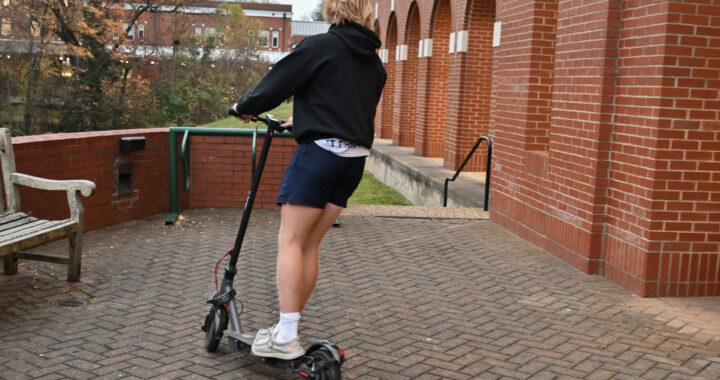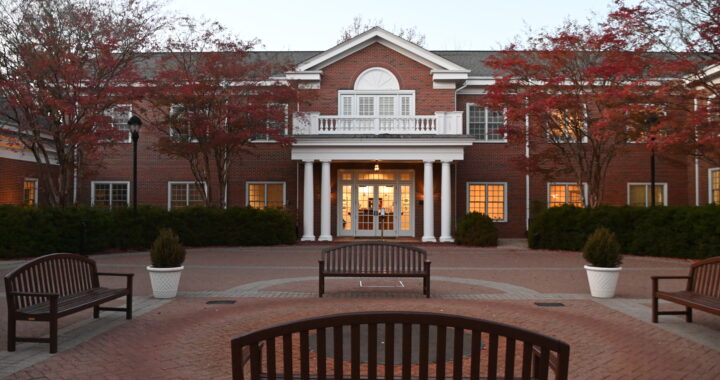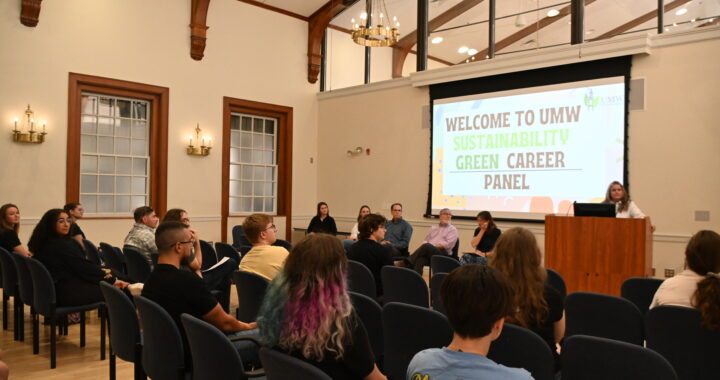Efforts to Ramp up Support for Athletics Seen Across Campus
5 min readThe University of Mary Washington plans to spend $2.5 million to level the playing field with other university sports programs.
This semester, construction crews tore Fields A and D of the Battleground Outdoor Fields apart to roll out a carpet of artificial grass, planning to add fencing, locker facilities and field lights. This investment is part of a new race to make UMW athletically competitive with other schools.
According to the Vice President of Student Affairs Doug Searcy, a student recommended the installation of the artificial turf.
“The turf project was conceived last year out of a student recommendation asking for more access to the campus recreation turf field. Because UMW club sports have exploded in the past few years, access to this space was extremely limited,” Searcy said.
The new initiative has also motivated the opening of the $27 million Anderson Center in August of 2011. The Anderson Center will host basketball games and be able to seat approximately 2,500 spectators.
The addition of fighting Eagle mascot logos on the pavement of College Avenue between Route 1 and Williams Street, which was an initiative by Rick Pearce, acting vice president for administration and finance, with the intention of making athletics more of a priority at UMW.
In an email Associate Vice President for University Relations and Director of Communications George Farrar sent out on Nov. 28, he said that the logos would serve, “as a symbol of school spirit and pride in UMW athletics.”
Sophomore Katie Gerbes is pleased with the plans for the Battleground Outdoor Fields.
“It will step up UMW athletics to another level in addition to leaving some positive imprints on guests from visiting teams,” Gerbes said.
However, for some students the amount of money being spent on UMW’s sports facilities seems excessive.
Junior cross-country athlete Kyle Anderson thinks that UMW is unproductively investing money into athletics.
“I think as a Division III school, athletics shouldn’t be that kind of a priority…it’s excessive,” said Anderson.
Jessica Hall, a senior, does not participate in the athletics at UMW, agrees that money should be spent on other priorities.
“Our tuition has gone up a lot and there’s a lot of things at our school that aren’t provided for,” said Hall.
Despite protests that the improvements to the athletic facilities are poor investments, Senior Ryan Taibl thinks the new artificial turf would be a worthwhile investment.
“With turf, games can’t be called on account of wetness so as an athlete you go into game day, knowing that the game will happen unless there is lightning. I think Mary Washington is an academic-first, sports-second school, because coaches strongly encourage you to study and to go to every class possible, along with the implementation of study hall,” Taibl said.
UMW is an NCAA Division III school, which means that the university does not offer athletic scholarships and must have at least five male sports teams and five female sports teams. Also, Division III schools cannot use funds endowed for the sole use of the athletics department. Other Division III schools in Virginia include: Eastern Mennonite University, Randolph College, Hampden-Sydney College, Lynchburg College, Shenandoah University, Christopher Newport University, and Washington and Lee University.
Division I schools such as James Madison University offer athletic scholarships and must have at least a total of 14 sports teams.
UMW field hockey and women’s lacrosse coach Dana Hall said the plans for the Battleground Outdoor Fields, “are going to help Mary Washington become competitive at the national level.”
Even though Division III schools are considered the least athletically competitive schools, many feature new synthetic playing fields which are more advanced and sophisticated than Mary Washington’s. Some even feature new concession stands and stadium style seating for students, alumni and fans.
Eastern Mennonite University, Shenandoah University and Hampden-Sydney College have several artificial turf fields for their sports teams to play on.
Randolph College has recently added a new playing field and track for the use of the soccer and lacrosse teams, as well as the campus at large.
Randolph College’s website says, “The new facility, which features a synthetic turf playing field and an eight lane all-weather track, is lit to provide for night-time competition and practice. The complex includes permanent seating, a press box, and a concession area.”
Lynchburg College, which has about 2,500 students, has completed renovations to their athletic complex by upgrading Shellenberger Field, home to their men’s and women’s soccer, lacrosse, track and field, and field hockey teams.
Their new complex features “a large, new artificial turf field, a new state-of-the-art eight-lane track, and a spectator capacity of 3,000,” according to their website.
Hall identified the grass fields, which the field hockey and women’s lacrosse teams currently use, as a deterrent to prospective students looking for a good sports program at the college they choose to attend.
“Currently there are over 200 Division III teams playing field hockey. Only 22 are grass-field teams. After this summer, there will be 10 teams left in the country playing on grass fields,” Hall said.
Athletic Director Ed Hegmann said the UMW fields are not as good as they used to be.
“With the advent of fully lighted, synthetic surface fields and the fact that UMW Athletics has none, our complex is no longer considered to be among the best, not even within our conference,” Hegmann said.
Gerbes agreed with Hegmann’s assessment.
“The location, setup and even fields are in great condition, but simply cannot compete with newer fields and field technology out there. I am more than elated about the upcoming turf fields,” Gerbes said.
Mary Washington does not have a football team to draw public attention, but the university is still unable to ignore the money other schools are investing in their sports programs.
When it comes to deciding between similar schools, athletic programs do become another amenity for prospective students to weigh.
When asked what students are looking for in their college of choice, Cris Hairston, the assistant dean of admissions, said, “students are now looking for programs, majors, and amenities.”
Hall and others share the hope that improvements to the athletic facilities, such as the Anderson Center and the new artificial turf fields, will draw high-school athletes to UMW, despite the lack of athletic scholarships at UMW.
Jeremy Thompson, who serves as a tour guide of the campus for prospective students, said that people have started coming to UMW specifically for sports.
Thompson said, as a UMW tour guide, “I see several people come into the school looking at sports programs. I know for a fact that our men’s rugby team has been recruiting heavily and a lot of new guys show up wanting to come here because the team is so good. It’s like that for a lot of sports.”
If the university wants to continue to rival other schools in Virginia and on a national scale, investments like that for the Anderson Center and the Battleground Outdoor Fields are not only advantageous to sports teams, but necessary to continue to draw students to the school Hairston said.
Paulina Kosturos, Matt Blair, Cathalijne Adams, and Wesley Host contributed to this report.


